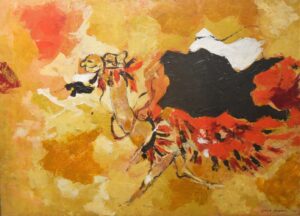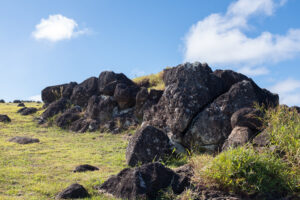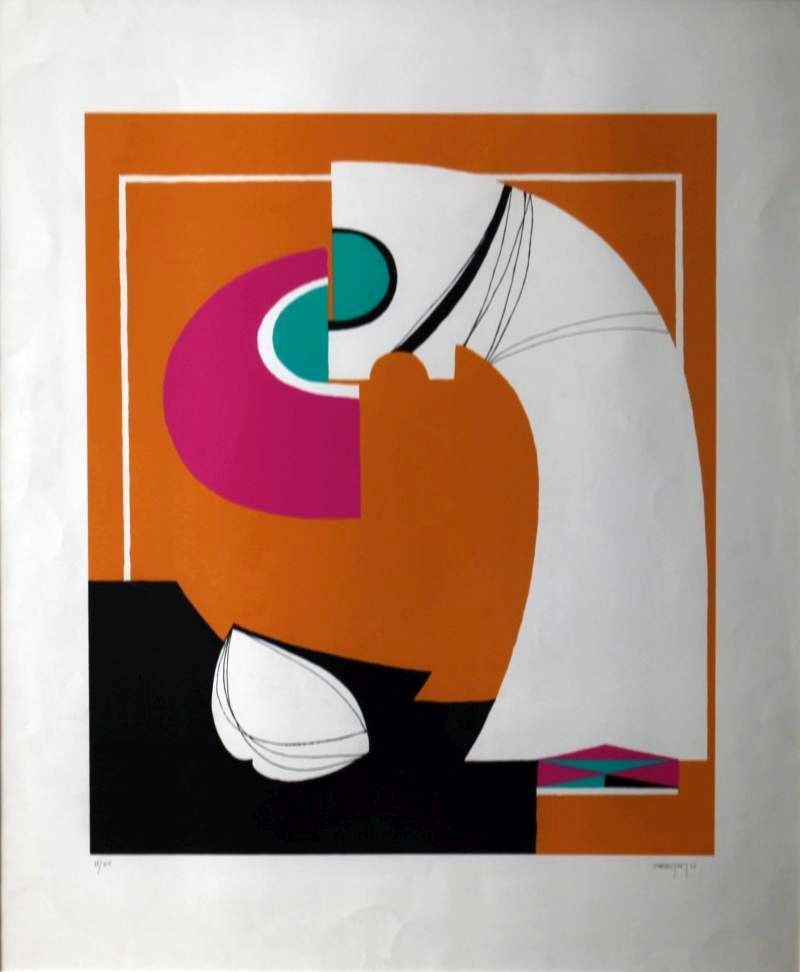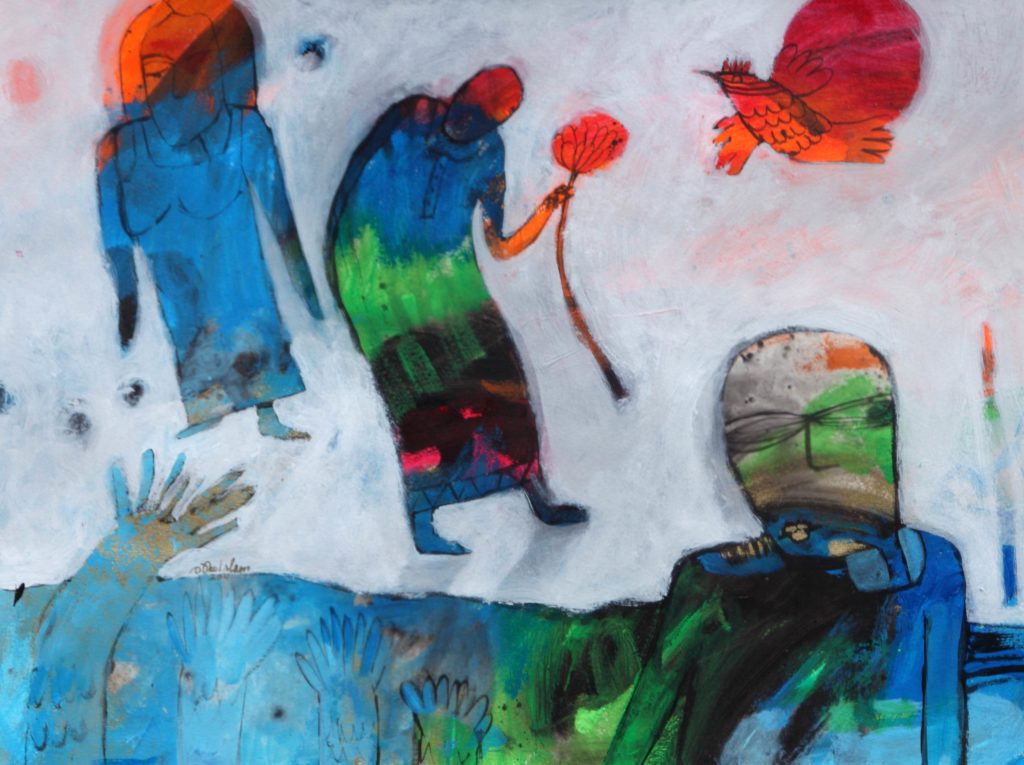Courtesy of the Hindiyeh Museum of Art

Laila Shawa
Untitled (1965)
Oil on Canvas (70 x 50 cm)
By JULIA COOKE

The morning was clear and the colors vivid: yellow brush, white ocean froth against cobalt sky. In front of me, dense gray volcanic stone appeared to consume the light. I stood in salty mist before an altar on the north coast of Rapa Nui, Easter Island. A single toppled moai lay in violent chunks on the ground. At 9:00 a.m. the sun still hovered tight at the horizon. Rapa Nui, which is part of Chile 2,300 miles away, is kept closer to mainland time than by geographical rights it should be. The sun rises gray and sticky at 8:30 in the morning, and sets late, too. This is not the only disorienting thing about Rapa Nui, but rather the most objective example.
Text and images by ALAA TAWALBEH
After drawing the collection of dark faces in charcoal, Alaa was provoked to give them a story, so he used the same charcoal sticks to form words. The words were written after the drawings, so the faces can still have different stories. These drawings and more from the same collection will be displayed in Alaa’s second solo exhibition, forthcoming in September 2021 in Amman, alongside works in watercolor.

At Rukban refugee camp, your only source of entertainment is sitting on the cold floor and staring at a slit in your tent. It flaps open with each gust of wind and cold drops of rain land on your face, just like the broken window in your old house.
The raindrops are black. They say it is the soot from a faraway city. Some say it’s from your city, Aleppo. Maybe some of it has come from the building you once lived in.
Courtesy of the Hindiyeh Museum of Art

MOHAMMAD AL QASEMI, UNTITLED
SILKSCREEN ON PAPEAR (60 x 80 cm)
By SONYA CLARK

The Solidarity Book Project was envisioned by Professor of Art and Art History Sonya Clark, as one way for Amherst College, in its Bicentennial year, to recommit to a more equitable future by pushing against legacies of settler colonialism and anti-Black racism.
Courtesy of the Hindiyeh Museum of Art
 ISLAM KAMIL ALI
ISLAM KAMIL ALI
UNTITLED (2011)
47 x 62 CM, ACRYLIC ON CANVAS
By BEN SHATTUCK

A wooden chair, washed up on the beach between Nauset and Wellfleet. All drawings by the author.
“We will remember within what walls we lie, and understand that this level life too has its summit, and why from the mountain-top the deepest valleys have a tinge of blue: that there is elevation in every hour, as no part of the earth is so low that the heavens may not be seen from, and we have only to stand on the summit of our hour to command an uninterrupted horizon.”
—Henry David Thoreau, July 1842
Cape Cod
The idea to follow Henry David Thoreau’s walks came plainly while I was standing in the shower at dawn one May morning, listening to the water drill my skull and lap my ears, wondering what I could do to stop the dreams of my past girlfriend. This was some time ago, when I couldn’t find a way out of the doubt, fear, shame, sadness, and pain that had arranged a constellation of grief around me. In this last dream, the one that got me into the shower at sunrise, she was in labor. Her husband—my dream had rendered him with dark hair in a cowlick, wearing a red shirt rolled to the elbows—stood bedside, holding her hand while she took deep breaths. I stood against the wall, touching a white handkerchief that I wanted to offer them. She looked up at her husband. He closed his hands over hers, something I must have seen in a movie. Though I wanted to leave the room, I stayed, because my legs weren’t working just then. I kept touching the handkerchief. The baby came. There were three of us in the room, and then there were four.
Text by JOCELYN EDENS
Art led by TATIANA POTTS
